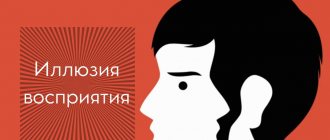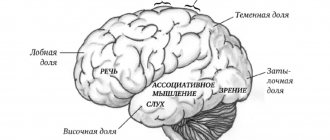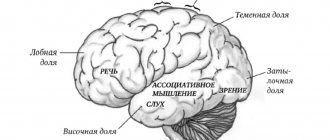Illusion of perception in psychology.
Mirages, distorted sounds and images are all illusions of perception. They arise against the background of the fact that a person distorts the interpretation of stimuli perceived through the senses. The impressions he receives at the same time force him to draw incorrect conclusions about the properties of the stimulus object. The visible, audible, and tangible in a distorted form differs from the real stimulus. The discrepancy can be eliminated through measurement and analysis.
Illusion of perception in psychology
The human psyche is prone to incorrect perception of situations, sensations, and images. Psychology considers illusions of perception as phenomena that arise against the background of mental and physical well-being, as well as in pathological conditions.
Distorted perception can affect all sensory systems. The most common form of misperception is visual illusion . Distortions of sounds, tastes, and smells also often occur. Tactile distortion occurs relatively rarely.
The concept of “perceptual illusion” should not be confused with hallucinations. The latter arise without any real stimulus and are exclusively a product of the psyche. Perceptual illusions arise in response to the influence of a stimulus located in the external environment.
Illusions can be caused by physical factors (for example, distortion of the shape of objects when looking at them through a prism or water). The reasons for the appearance of illusions of perception can also be of a psychological nature. In this case, they are formed on the basis of a person’s experience, his attitudes, emotional state, and the tasks that face him.
Concept and essence
Illusion is a distorted perception of reality, which is based on deception of the senses. A person begins to perceive the imaginary as the real. The term “distorted” means that the object that an individual sees does not correspond to the surrounding reality. Distortion can be easily eliminated by understanding the reasons for its occurrence or by taking a series of measurements. Sometimes illusions are associated with what a person does not believe in.
Types of distortion:
- Illusions that are associated with water, the influence of a prism, are mirages, distortions of air due to hot steam. Based on physical phenomena.
- Illusions associated with the peculiarities of perception. Distortions are based on psychology and physiology.
The most studied are visual illusions. On the Internet or special textbooks you can find images that appear to move, but at the same time remain in place.
Main types
Illusions of perception can be of several varieties. The main types include background distortions:
- lack of attentiveness;
- affect;
- pareidolia (the appearance of illusory images when viewing objects);
- optical-geometric distortions.
In addition to optical illusions, other types of illusions may occur:
- sound;
- physiological (for example, after lifting objects of different weights in the right and left hands);
- psychological (related to attitudes);
- verbal (perception of conversations is distorted);
- tactile;
- olfactory;
- taste.
There are also illusions in which the perception of time is disrupted.
Illusions of inattention
This type of distortion occurs when a person is not sufficiently concentrated or lacks information about a subject. The illusion usually appears in conditions that make objective perception difficult - when the room or street is noisy, dark, or the object of attention is at a great distance.
Often, illusions of inattention arise due to the fact that a person has certain expectations and is concentrated on isolating a specific object (sound, image, etc.) from the environment. Thus, a mushroom picker who is determined to have a successful trip to the forest may notice a mushroom under a leaf or branch of a tree. As soon as the mushroom picker switches his attention to other objects, the illusion of inattention arises - he stops seeing the mushrooms.
Representatives of different professions may also experience the illusion of inattention. So, the doctor pays attention to signs of illness noticeable in a person’s appearance and behavior. The photographer evaluates the photogenicity of the client, and the linguist perceives the other person from the point of view of the purity and correctness of his speech.
Psychological attitudes and superstitions are the most common reasons for the appearance of the illusion of inattention in everyday life. So, if a student fails in one subject, then the teacher of this school discipline perceives the student as a failure as a whole.
Illusions of affective nature
A strong emotional shock, reaching the level of affect, can cause illusions of perception. Most often, the emotions that provoke illusions are fear, severe tension, and anxiety.
Under the influence of strong fear, a person who finds himself in the forest at night will see frightening figures in the shadows of bushes and trees; he will perceive the creaking of trees and the rustling of leaves as a threat. Illusions of affect are a normal reaction of a healthy person that arises in a potentially dangerous or alarming situation.
At the age of 4-6 years, children often experience such illusions. They see monsters or other frightening characters in a dark room. For children, the occurrence of such illusions is a normal stage of psychological development associated with the formation of abstract thinking and fantasy.
Mental disorders can also be the cause of affective illusions. Thus, a person with generalized anxiety disorder and a high level of suspicion perceives random glances from passers-by on the street as an attempt at surveillance, and the conversations of other people as a desire to gossip about him.
Pareidolic illusions
Distortions of this type occur when a person examines real objects or images. The appearance of pareidolia cannot be predicted; they occur suddenly.
In most cases, illusory images are fantastic in nature. For example, in a cloud in the sky a person sees figures of animals, outlines of angels, etc.
Often, pareidolic illusions appear against the background of severe alcohol intoxication, after the use of psychoactive drugs.
Pareidolic illusions can be widespread. It happens that a large group of people sees the same images at the same time. This happens when people look at paintings, observe natural phenomena, or look at very famous natural and architectural objects.
One such object that causes mass pareidolia is an image of the Martian region of Cydonia. The photo shows an area with several mesas that form a bizarre landscape. Most people who look at a photograph of Cydonia see a man's face in it.
A similar phenomenon (pareidolia) can be traced in the way people describe clusters of celestial bodies called constellations. Scientists consider the Loch Ness monster, space aliens, ghosts in ancient castles and other paranormal phenomena to be the result of pareidolic illusions of perception.
The exact cause of the pareidolia phenomenon is not known. According to cosmologist Carl Sagan, the ability to recognize images at great distances in poor visibility conditions has been necessary for humans since ancient times. Pareidolia when meeting another person made it possible to understand whether it was one of our own or a stranger, and whether it was worth fearing. In the process of evolutionary development, the recognition mechanism was mastered so well that people learned to notice patterns in objects where they were absent.
The phenomenon of pareidolia is actively used in the creation of advertising products and industrial design. It is believed that objects with outlines similar to a human face or body are better perceived by consumers. The design of the glass bottle for Coca-Cola (Contour Bottle) traces the use of pareidolia in the form of the outlines of a female body.
For consumers to perceive anthropomorphic products well, the outline of a person must be barely visible. If they are too obvious, then the pareidolia product will cause disgust and will seem too intrusive, and sometimes scary.
Robot developers note that the more similar their products are to a living person, the more negative emotions they cause in users. A robot that is as similar to a human as possible is perceived as an anomalous phenomenon or a dead man who has come to life.
Optical-geometric distortions
Illusions of perception can arise due to the anatomical features of the structure and functioning of the eye. The essence of optical-geometric illusions is that the real sizes of objects that a person sees and the perceived ones do not coincide.
The simplest example of an optical-geometric illusion is a picture with drawn lines. They are the same size and have arrows at the ends. The line with the arrow facing inward appears shorter. The one with the end pointing outward appears longer.
The occurrence of optical-geometric illusions is not associated with mental disorders. Distortions are observed by all healthy people, which is why illusions are called physiological.
Causes of illusions of perception
Scientists have not yet provided an explanation for most of the illusions of perception. It is believed that some distortions are related to the integrity of the perception of objects, which is disrupted due to:
- sporadic errors in the functioning of the central nervous system against the background of severe fatigue, stress, lack of sleep, intoxication;
- high sensory load, in which a person is influenced by stimuli simultaneously from several sources. Such irritants may be bright light, high noise levels, high or low air temperature;
- intersensory effect - it occurs when the senses combine and produce a common impression. So, in a good restaurant, a person is influenced by calm, muffled music, the smell and taste of food, and a beautiful interior. Together, all these factors enhance the sensations - food seems even more delicious;
- intersensory interaction - simultaneous coordinated action of the senses, as a result of which a holistic idea of an event or object arises.
The phenomenon of illusion of perception in psychology is also considered as a consequence of mutual stimulation of one sensory system by another. For example, when listening to music, visual images arise.
The cause of illusions can also be psychological and social factors:
- unconscious desires - they become the basis for the formation of a false image of information coming through the senses;
- past experience - a person tends to perceive objects as he is used to seeing, hearing, feeling them;
- emotional state - mood affects how a person perceives the same facts, events, phenomena. Under the influence of heavy emotions, a negative perception of most events and objects is formed.
- personal characteristics, self-esteem, susceptibility or immunity to outside influence - these factors can influence the formation of distortions of perception;
- stereotypes of thinking, stable beliefs - they force a person to consider images, objects and events from a familiar point of view.
In order not to fall into the web of illusions, it is worth considering events and objects from different positions, applying analysis, and, if possible, checking the truth of perception by measurement.
History of discovery
The perception of reality began to receive attention in 1899. Illusions were familiar to people before, but were perceived as something mystical and frightening.
The first researchers in this direction conducted experiments to prove that illusions are based on people's expectations. These experiments involved lifting weights while blind. The buckets contained the same amount of sand, but people were told that they would now be allowed to lift the bucket even heavier. Participants in the experiment believed that buckets of equal weight were heavier than each other.
The first scientist to conduct such experiments was R. Muller. He asked people to estimate the same weight in containers of different sizes.
After conducting the experiments, Müller presented his personal arguments regarding similar distortions in the Würzburg school. Scientists from other European psychological schools began to develop and study this concept in the first half of the 20th century. They called illusions the anomalous phenomena that occur in nature - mirages, visual distortions due to the refraction of light. Psychologists from the Gestalt school shared this opinion.
Examples of illusions in psychology
Widely known examples of perceptual distortions are fractal pictures. In fact, the images are static, but if you look closely at their central part, it seems as if it is moving.
Cognitive illusions manifest themselves through certain stereotypes, for example:
- fat people are good-natured, thin people are evil;
- the dog is angry, the cat is affectionate;
- dolphins save people;
- in life you need to achieve success (plant a tree, raise a son, ...);
- The necessary knowledge can only be obtained by entering an educational institution.
You can encounter illusion in everyday life. For example, if you look closely at the railway track, it seems that at a distance it is narrower than up close.
In psychology, some illusions are used for diagnosis. Thus, Rorschach blots are an example of a deliberately induced illusion used to reveal the intellectual abilities and other characteristics of the subject.
Irina Sherbul
How taste buds deceive us
Research shows that our sense of taste is also not the most reliable source of information.
So, wine connoisseurs were given The Red and the White to try the same drink. In the first case, it was a regular white wine, and people indicated its characteristic notes. Red food coloring was then added to the same drink and given to the participants again. This time, connoisseurs felt notes characteristic of red wine, although the drink was the same.
Even the color of the dishes can affect the taste of food. The study demonstrated Cup color influences the taste of hot chocolate that when hot chocolate was served in a cream or orange cup, participants perceived it as sweeter and more flavorful than when served in a white or red cup.
This works with any drink: yellow cans enhance the lemon flavor, blue soda is a better thirst quencher than red soda, and pink soda tastes sweeter.
If the sense of taste is so easily deceived, one might assume that tactile perception cannot be trusted either. And indeed it is.
Nature of occurrence
Illusions in psychology are phenomena of the human psyche caused by a number of natural causes.
Such reasons include:
- natural physical phenomena of a natural nature (optical distortions of reality);
- suggestion of surrounding people, forming a distorted perception of objects or phenomena;
- exposure to medications, drugs, strong alcohol;
- exposure to physical pathologies (high temperature, hypothermia);
- nervous breakdowns, strong feelings, stressful situations;
- mental disorders or diseases;
- synesthesia (mixing of sensory sensations during the creative process: the perception of a non-existent color when composing or listening to a melody, the formation of sounds while writing works while contemplating images or landscapes).
Find or trash?
The idea of the existence of junk DNA was challenged by the ENCODE project - The Encyclopedia of DNA Elements (its first results were published in the journal Nature in 2012).
Having received numerous experimental data on which parts of the human genome interact with various proteins, are involved in transcription - the synthesis of RNA copies of genes for subsequent translation (protein synthesis from amino acids on a messenger RNA matrix) - or other biochemical processes, the authors came to the conclusion that more than 80% of the human genome is functional in one way or another. Of course, this thesis caused heated discussion in the scientific community.
Lungfish Protopterus aethiopicus. Largest known genome. Genome: 133 billion base pairs. Genes: many.
One of the most ironic articles, published by Dan Graur, a molecular evolutionary bioinformatician and professor at the University of Houston, and his colleagues in 2013 in the journal Genome biology and evolution, is called: “On the immortality of televisions: “function” in the human genome without evolution Gospel according to ENCODE". Its authors note that individual members of the ENCODE consortium disagree on how much of the genome is functional.
Thus, one of them soon clarified in the journal Genomicron that we are not talking about 80% of the functional sequences in the genome, but about 40%, and the other (in an article in Scientific American) completely reduced the figure to 20%, but continued to insist that the term “junk DNA” needs to be eliminated from the lexicon.
Human immunodeficiency virus (HIV). The rapidly changing genome of the human immunodeficiency virus. Genome: 9749 base pairs (but already mutated). Genes: 9, but they encode 18 proteins.
According to the authors of the article “On the immortality of televisions,” members of the ENCODE consortium interpret the term “function” too freely. For example, there are proteins called histones. They can bind the DNA molecule and help it fold compactly. Histones can undergo certain chemical modifications.
According to ENCODE, the proposed function of one such histone modification is to “prefer to be at the 5′ end of genes” (the 5′ end is the end of a gene from which DNA and RNA polymerase enzymes move when copying DNA or during transcription). “In much the same way, one could say that the function of the White House is to occupy the space at 1600 Pennsylvania Avenue, Washington, D.C.,” opponents note.
Minimal mouse
There is a point of view that most of the human genome is non-functional. In 2004, the journal Nature published an article describing mice from whose genome significant fragments of non-coding DNA measuring 0.8 and even 1.5 million nucleotides were cut out. It was shown that these mice do not differ from ordinary mice in body structure, development, life expectancy or the ability to leave offspring.
Of course, some differences could go unnoticed, but overall this was a serious argument in favor of the existence of “junk DNA”, which can be gotten rid of without any special consequences. Of course, it would be interesting to cut out not a couple of million nucleotides, but a billion, leaving only predicted gene sequences and known functional elements. Will it be possible to develop such a “minimal mouse”, and will it be able to exist normally? Can a person get by with a genome only half a meter long?
Perhaps someday we will find out about this. Meanwhile, another important argument in favor of the existence of junk DNA is the presence of fairly close organisms with very different genome sizes. The puffer fish genome is about eight times smaller than the human genome (although it has about the same number of genes), and 330 times smaller than the genome of the already mentioned Protoptera fish. If every nucleotide in the genome were functional, then it is unclear why onions would need a genome five times larger than ours?
Evolutionary biologist Susumu Ono drew attention to the colossal differences in the sizes of the genomes of similar organisms. It is believed that Ono coined the term “junk DNA.” Back in 1972, long before the human genome was read, Ono expressed plausible ideas about both the number of genes in the human genome and the amount of “garbage” in it
In his article “So Much Junk DNA in Our Genome,” he notes that there must be about 30,000 genes in the human genome. This number, which was not at all obvious at that time, turned out to be surprisingly close to the real one, which was found out decades later. In addition, Ono provides an estimate of the functional fraction of the genome (6%), declaring more than 90% of the human genome to be junk.
Mimivirus Acanthamoeba polyphaga mimivirus. Largest known viral genome. Genome: 1,181,404 base pairs. Genes: 979.










